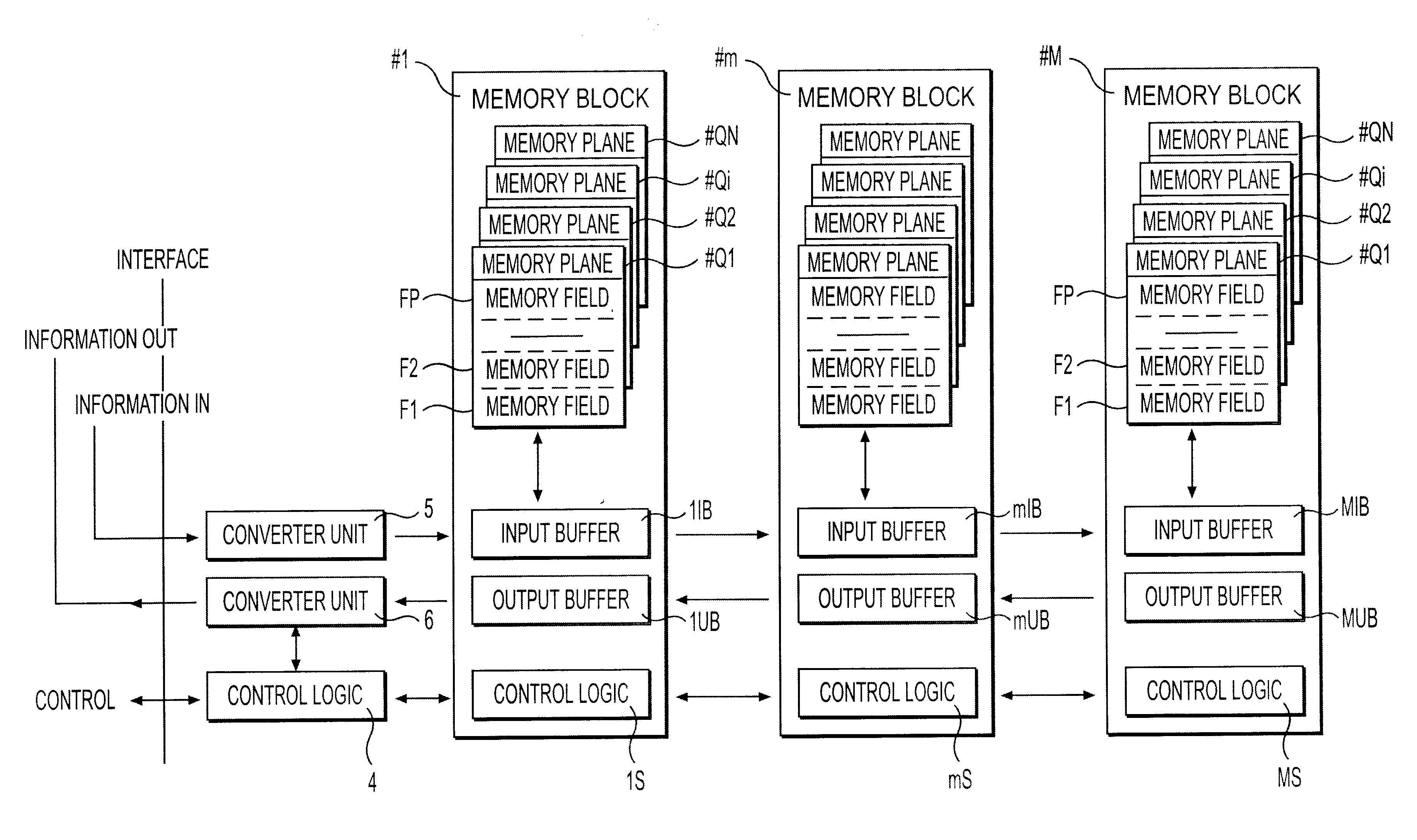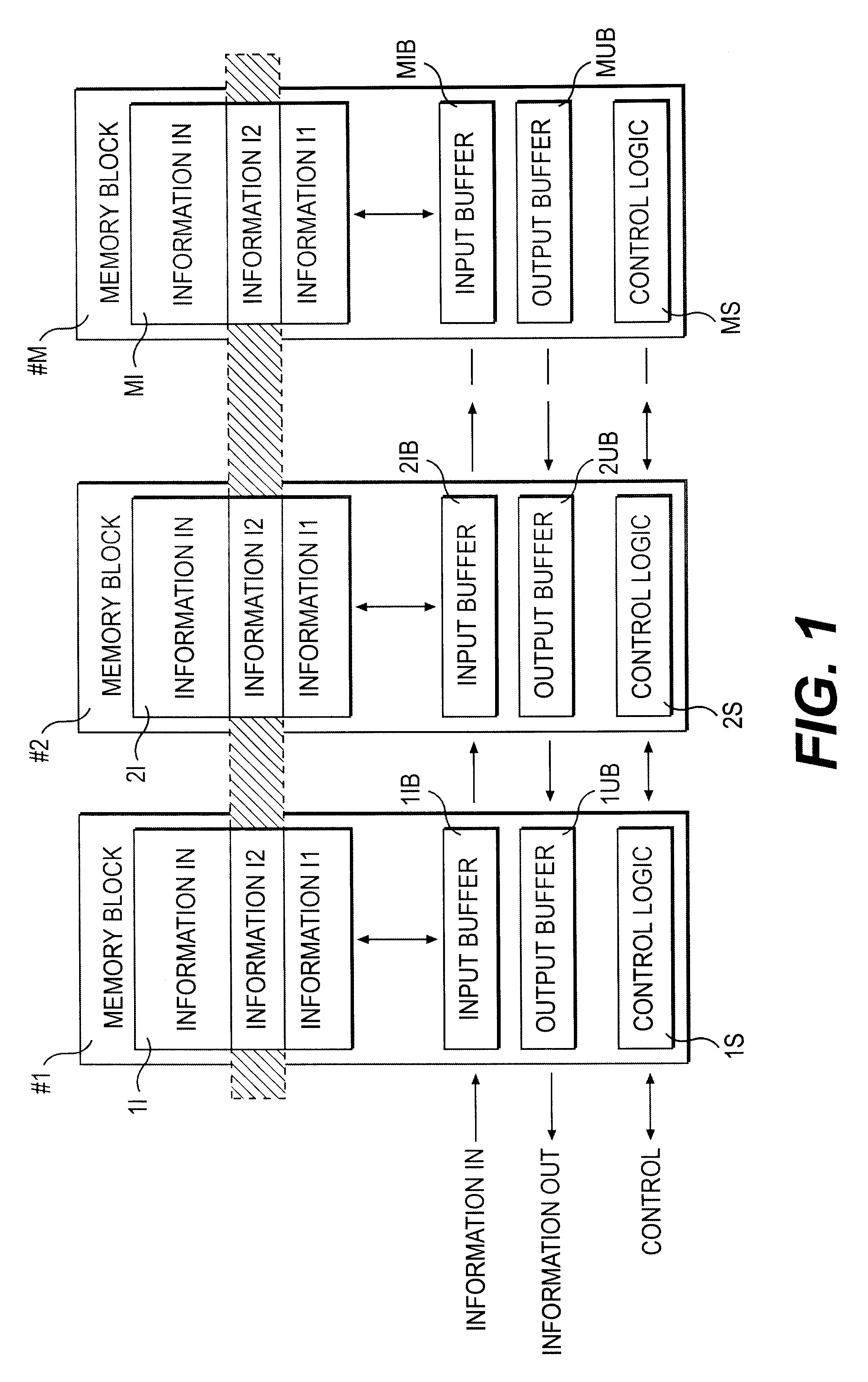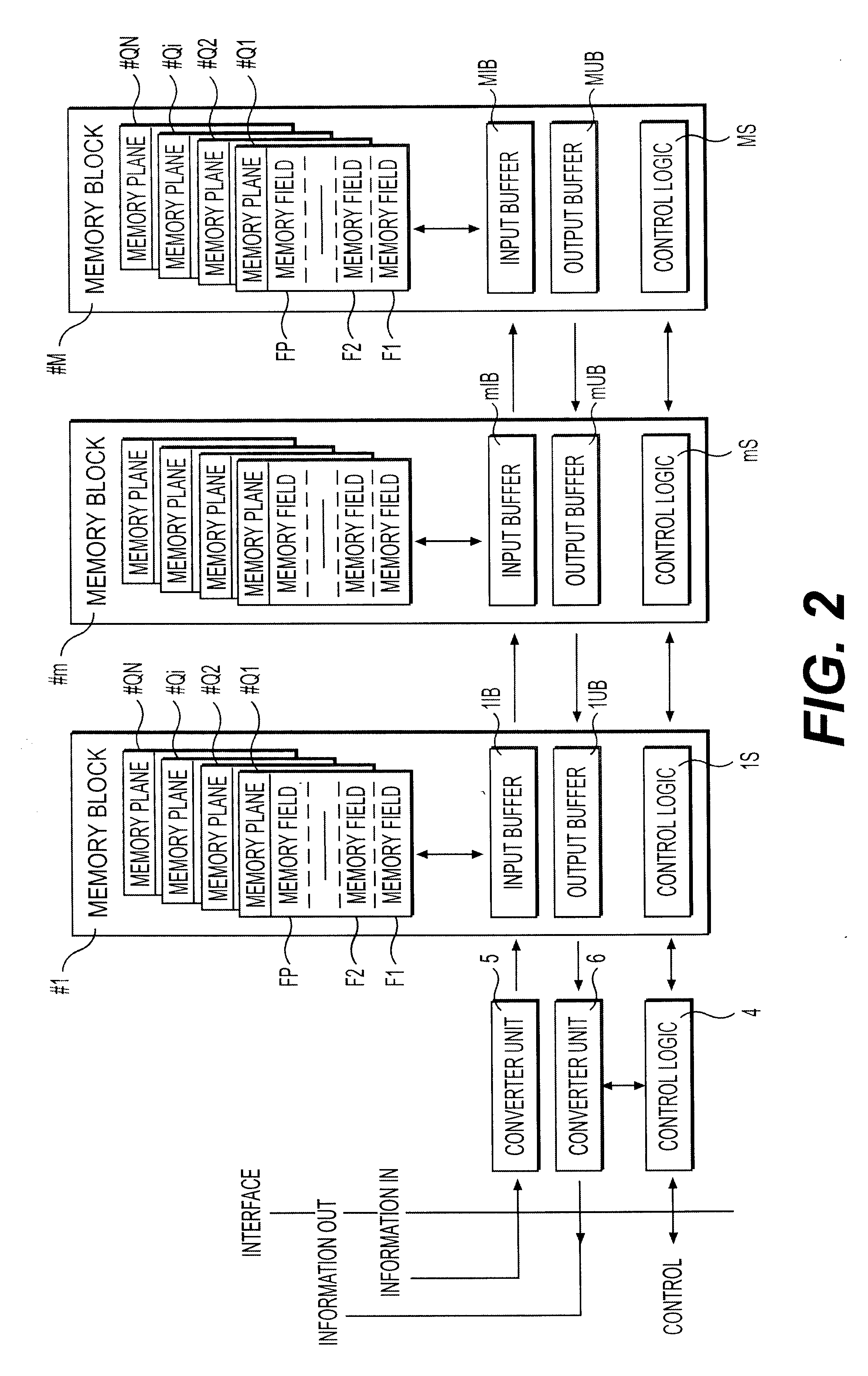Memory structure for storage of memory vectors
a memory structure and memory vector technology, applied in the direction of memory adressing/allocation/relocation, instruments, digital computers, etc., can solve the problems of increasing the complexity of the address decoder and the memory size is always limited, and achieve the effect of fast and continuous access to storage places
- Summary
- Abstract
- Description
- Claims
- Application Information
AI Technical Summary
Benefits of technology
Problems solved by technology
Method used
Image
Examples
Embodiment Construction
Definitions
Stored information Refers to a number of vectors which each, seen from outside, are treated continuously and in undivided form.
Vector Refers to the whole continuous amount of information which is to be processed in one piece. A vector is defined from outside with the help of a starting point, or identity, and length.
Byte group Part of a vector adapted to size of a memory field. A vector can be described as a sum of byte groups.
Memory structure Refers to the whole of the system according to FIG. 2. The memory structure consists of one or more memory blocks, the converter units 5, 6 and control logic 4.
Memory block Refers to a unit with a well-defined function which only communicates with the nearest neighbors, see FIG. 2. The memory structure is always expanded with a whole number of new memory blocks.
Storage position Refers to the part of the memory structure's total memory area which after configuration is adapted to the length of the current vector. The storage position...
PUM
 Login to View More
Login to View More Abstract
Description
Claims
Application Information
 Login to View More
Login to View More - R&D
- Intellectual Property
- Life Sciences
- Materials
- Tech Scout
- Unparalleled Data Quality
- Higher Quality Content
- 60% Fewer Hallucinations
Browse by: Latest US Patents, China's latest patents, Technical Efficacy Thesaurus, Application Domain, Technology Topic, Popular Technical Reports.
© 2025 PatSnap. All rights reserved.Legal|Privacy policy|Modern Slavery Act Transparency Statement|Sitemap|About US| Contact US: help@patsnap.com



